What would you do with a couple used engines from the local junkyard? Take them down to the shop and make something crazy? Some people have the balls to do it, and a few even have the time, money, and resources. And unless you have the dime to spend on a crate motor, building used engines is the way to go. But which ones can you actually count on?
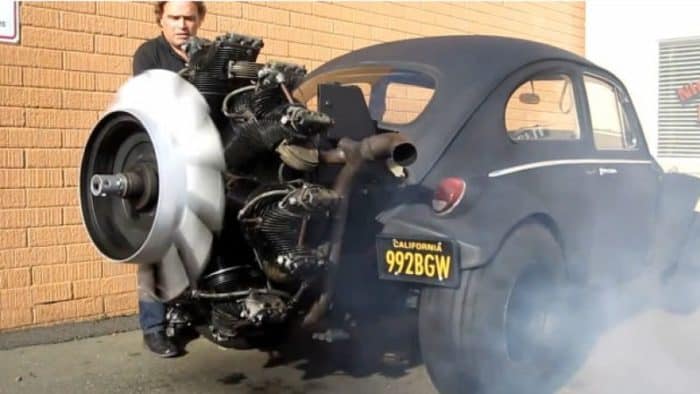
What to Look for in Used Engines
Most resellers can provide at least some idea of mileage, service history, and overall condition, but whether you’re digging through eBay and Craigslist ads or picking up a parts car in town, there are some things you need to know about used engines before you take the plunge.
Some engines just aren’t worth it. There’s a reason everyone does an LS swap – it’s trusted. Even if you do a total rebuild at great expense, some used engines have inherent weaknesses or parts are hard to come by.
The rest of the car is important. Inspect bearings, bushings, and overall cosmetics to get an idea of whether the previous owners took care of things. Check for oil weeps and coolant residue on the block and heads and for signs that someone’s been in the engine bay before.
Don’t gamble – do a reseal. Plan on spending weekend and a few hundred dollars to pull the engine, take it apart, and have a look at what’s inside. You get peace of mind from having fresh gaskets, belts, and timing, and you can check out the internals.
Some of these used engines are more common than others, but the only real limitations are your wallet and your imagination. Consider how swaps work though – can you swap a gasoline rig with a diesel engine easily? Can this engine fit in that body? Will this engine or transmission mate together nicely? Are diesel engines a better choice? Ask yourself all these questions before jumping into a complicated swap job! Anyway, without further ado let’s dive in to some of the best used engines available, broken down by country of origin.
Used Engines for Patriots
LS SWAP BRO
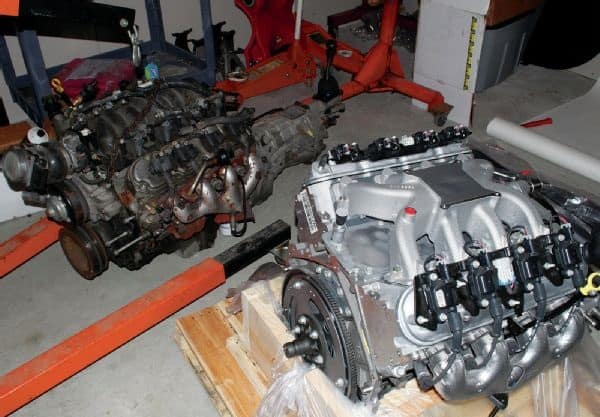
Okay, we all know the LS is the king of used engines, but it’s an unspoken rule that if you mention engine swaps you have to mention the LS – so let’s get it over with. Now the stuff of internet memery, the LS swap began as the most economical way to get a light and reliable V8 into a small space.
That’s why builders of the 240sx, FD RX7, and all kinds of custom applications have used engines from the LS family – they’re all durable, well-built, and cheap to modify.
The 2008-2009 Tahoe, Yukon, Escalade, Silverado, and Sierra used engines of the LFA variety which can be converted to an LS2 with minimal effort – swap the cam, lifters, and a few covers and you have an LS2 for the price of a wrecked ten-year-old soccer chauffeur.
LS2 ’68 Camaro “Evade”
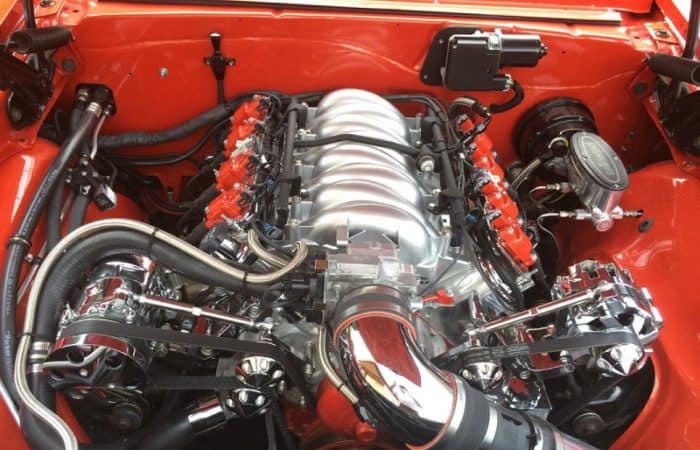
This beast of a Camaro proves used engines can perform better than new ones. Its owner wanted something he could drive every day and on long trips, so had a full-custom LS2 built to 500 horsepower and 430 torques. And damn, does it look mean.
Evade has been judged to within 1% of perfection at numerous shows, including 995 out of 1000 points at the 20th Annual Eckler’s Winter Nationals. Not a bad feather in the cap of used engines.
6.0 LQ4 V8
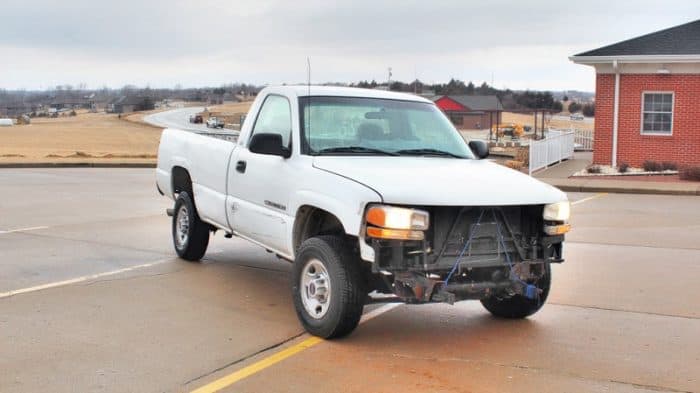
Early 2000s Chevrolet and GMC HD trucks are famous for playing the National Anthem out their tailpipes. Often found in a distressed shade of white with dents and rust everywhere, most come with at least $5 of recyclable beer cans in the bed. What you might not know is these workhorses can tow over 10,000 pounds – that’s because they all used engines that last forever.
The 6-liter LQ4 V8 was designed to haul heavy stuff for thousands of miles. Something else it hauls is ass, since it has over 300 horsepower and 360 pound-feet of torque bone stock. Find one in early 2000s Yukons, Suburbans, 2500 and 3500 trucks, Express vans, even the Hummer H2. We’ll personally thank you if you kill an H2 for its engine.
LQ4 Chevelle

The main difference between an LQ4 and an LS2 is an iron block, which means these can hold tons of power. They’re famous for being a cheap way to get insane stats, and this hot Chevelle gained world fame In 2016 from an article at Hot Rod by throwing down 800 horsepower. That’s thanks to 16 psi of boost from a single 80mm Borg Warner turbo. The builder says “getting sideways in third or fourth gear is no problem” – we’re not surprised.
GM 3800 V6

Unless you’ve been living under a rock, you know that used engines from Pontiac sedans can fit in just about anything that uses a transaxle. It’s also one of the most common used engines in the world with over 25 million produced to date. It’s been rated one of the best engines of the 20th century, so yeah, it’s reliable.
One of these powers pretty much any old Buick, Oldsmobile, or Pontiac with a V6. Bonus points if it’s beige.
Into a Fiero
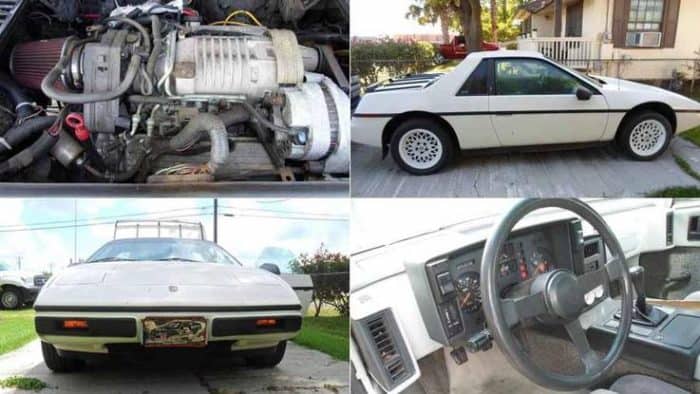
The Pontiac Fiero isn’t what most people would describe as exciting. They were overhyped even at the time, and they used engines that always left something on the table in terms of performance. With over 370,000 produced, a Fiero today can be a great platform for one of those shitty Ferrari kits or better yet, a 3800 V6 swap. A modern V6 really wakes these babies up.
Cummins 4BT 3.9
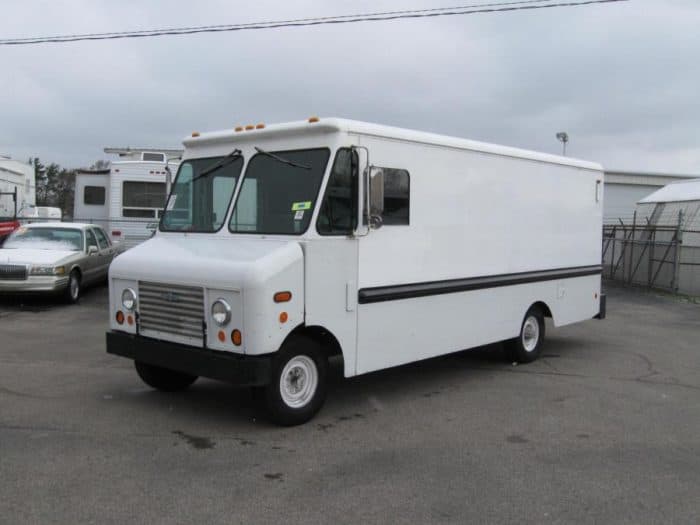
Everyone talks about the larger Cummins used engines, but what about the four-cylinder 4BT? The “baby Cummins” will allow you stick one of those crude stickers on any car you want. Turns out not everybody knows what those stickers mean, so follow that link to get learnt. I’ll wait.
Find one of these in any old breadvan in the RV section of Craigslist – no lowballs, I know what I have.
4BT Miata
The Cones-in-a-Parking-Lot Society scoffs at you for doing anything to a stock Miata outside of firming it up, so putting used engines in Miatas means provoking an internet army. It’s rare to hear about a swap that improves something about the stock balance of performance and durability, because most of them throw it out the window.
Which is exactly what you want in drift.
The Canadian gearheads over at Pistonhead Productions stuffed a 4BT into a 1990 Miata and backed it with a Ford T19 transmission and Ford 8.8-inch rear end. If you race SCCA and you haven’t vomited yet, good on you, because this Miata raised over $10,000 for a local high school’s shop class when it was auctioned in 2016. See, even the baby Cummins used engines can go to good use.
And speaking of Japanese cars, that brings us to…
Used Engines Overnighted from Japan
Honda F20C / F22C

There’s only one place to find these used engines: the venerated Honda S2000. That means someone will have to wreck one and extract its beating heart for you to commit automotive debauchery. But act fast: Honda only built about 110,000 for you to choose from, and we can already think of 50,000 perfect uses for an F20C.
At 120 horsepower per liter, S2000s used engines that sported the highest normally aspirated production power in the world while revving to over 9,000 RPM. And it’s a Honda, so longevity is assured as long as you respect its mechanical limits.
BMW S2002
In my dreams I see a wild F22C prancing through the forest when it happens upon my orange BMW 2002, bathed in sunbeams amid a field of flowers. One thing leads to another, the F22C ends up inside the 2002, and the lovechild looks something like this.
Lucky for me somebody with more money already had that dream, and they made it happen with one of the best used engines available. Diego Loza built this mad machine around the mill from an AP2 S2K. Underneath it’s way more Honda than BMW, but nobody’s complaining because this thing looks mean AF. I suspect purists miiiiiight not like it, but f**k haters.
Watch for this car’s build video to appear in the Used Engines section of YouPorn.
Subaru EJ Boxer

It’s a common misconception that Subaru’s EJ line of engines can be powered solely by vape. The neat thing about Subaru’s used engines is you can find any old 99-09 Forester, Legacy, Impreza, Outback, or even Baja in the USA and under the hood you’ll most likely find an EJ25.
Subaru rarely makes mistakes, but in the case of the earlier EJ251 used engines there’s a high incidence of head gasket failure and coolant passage clogging. This is easily addressed during a reseal by replacing the stock single-layer head gaskets with multi-layer ones, having the heads machined, and putting it all back together. The later EJ253 engines didn’t have this problem.
Setting that aside these are some of the most reliable used engines available today. Shit, you can build them to over 900 horsepower (turn your sound down).
Problem is, they don’t easily fit in most other cars. But you can easily put one…
Into a Volkswagen

One thing used engines from Subarus were practically made to do is power Volkswagens. Beetles, Westphalias, buses, Transporter trucks, even Synchros can adapt 2.5 Subaru used engines with ease. The original mills had well under half the power of even a stock EJ, and most people report an increase in gas mileage as well. Subaru reliability, classic Volkswagen style, what’s not to love?
Toyota 22RE

The 22R and 22RE used engines can be scavenged from just about any 1980s or 1990s Toyota light truck, or 4Runner. Good luck finding someone who wants to part with one though, because these used truck engins are gems and so are their cars.
A fuel-injected four-cylinder mill capable of 135 horsepower out of the box, they can be built for way more than that and are known to last for hundreds of thousands of miles if properly maintained.
22RE-Powered Celica
We love the Celica. It’s underrated, inexpensive, and reliably built. A vintage example is the perfect pairing for a 22RE. This beauty lives in California, home of rust-free classics parked on every corner. It’s an example of a swap that simply improves on the experience of the original car without losing the spirit of that which came before.
Two Jay Z
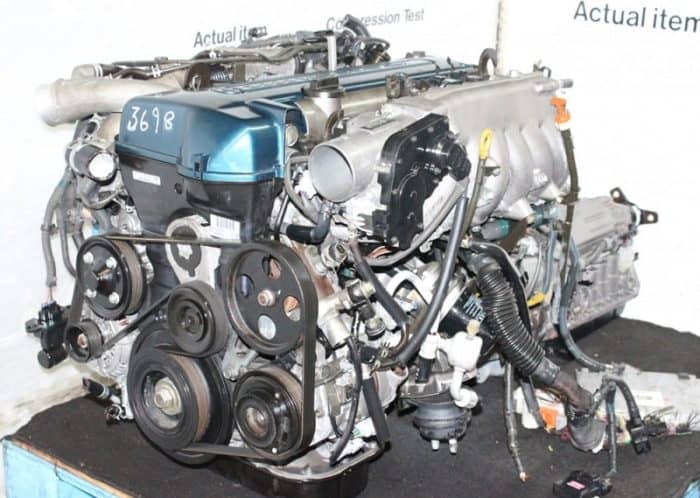
The 2JZ is like the LS of Japanese engines: the mere mention of it calls to mind the sound of a 240sx bouncing furiously off its rev limiter. It’s as easy as changing your shoes to drop a 2JZ into a variety of cars, and because so many Japanese cars used engines from this family, there are literally thousands of them to choose from and they’re all pretty cheap.
Oh, and the stock bottom end of a 2JZ-GTE can hold over 1000 horsepower.
Japanese cars you’ve never heard called by these names include the Toyota Aristo, Chaser, Cresta, Progres, Brevis, Crown, and Gita, all of which used engines from the 2JZ family. If you’re feeling fast and furious you could pull one from a Supra too, but please don’t.
2JZ Phantom
Everyone throws one of these used engines into a drift missile, but that’s been done. We’d rather see a turbocharger and a supercharger piled onto this straight-six to create a 900-horsepower road weapon. In stock form, these yachts used engines from BMW that were prone to failure at over 100,000 miles, since few Rolls Royces have ever seen that kind of use.
Nissan KA24E
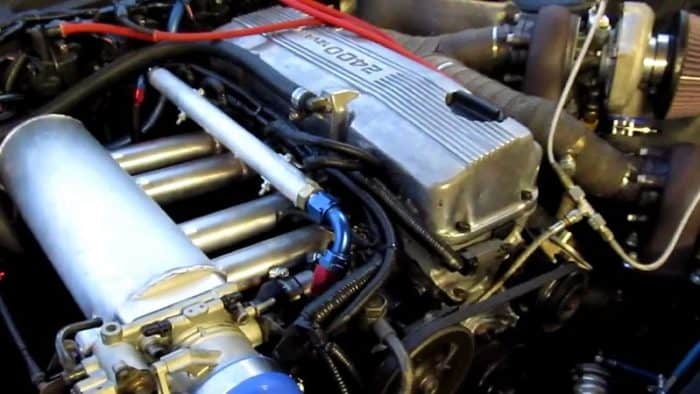
When I was young I rode to school in the back of a Nissan Stanza, and not once did I consider it to be a performance car. Little did I know that Stanzas used engines from the venerated KA line, the ones found in the early 240sx.
Later 240sx models used engines of the KA24DE derivative which had double overhead cams and four valves per cylinder, as opposed to the KA24E’s three-valve SOHC setup. This resulted in higher power, torque, and redline figures. As far as used engines go, either one is a reliable starting point for your next swap.
KA Nissan Hardbody
Some of you might not consider this to be an upgrade from a Stanza. I get that. But there’s a huge following for Nissan hardbody trucks, and let’s face it, nobody makes a basic small truck anymore. Most Nissan trucks originally used engines of the VE and other styles, so keep it in the family and choose a KA swap.
If you need an occasional parts hauler that doubles as a weekend drift machine, these are a pretty good choice.
Mazda 13B Rotary
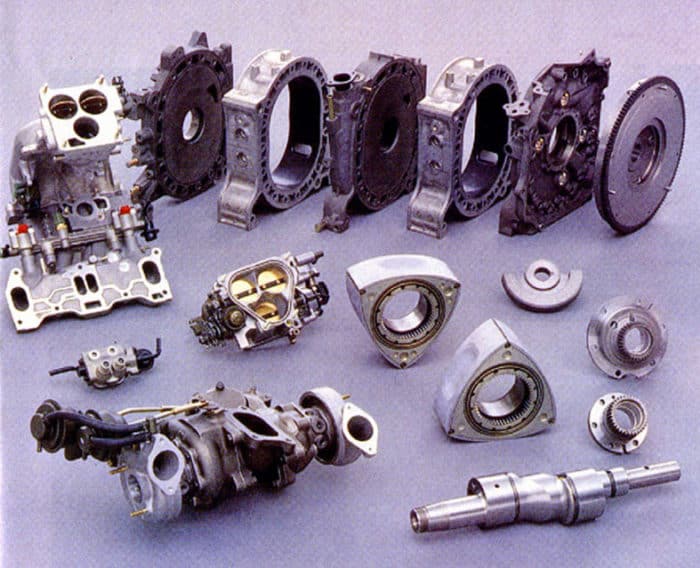
We started the Japan section of our Used Engines Countdown with a rare find that only came in one car, and these aren’t much better. Used engines of the Wankel variety are most commonly found in models that we didn’t get in the US. Score one point for eBay.
The earlier models are 10A, though you won’t find many of those floating around in the States. The 12A, and the more recent fuel-injected models are 13B, are found in any Craigslist Special RX7. Simply take that baby out, build it to your heart’s desire, and swap it into any project where engine bay space is on short supply.
Reliability is great, though gas mileage is bad compared to other used engines.
13B Beetle
Of course, even a 1.2-liter rotary makes upward of 130 horsepower, so that’s the tradeoff. Tuned examples can make over 250.
250 horsepower sounds a lot better when the entire car weighs under 2000 pounds; such is the case with this 13B-powered 1966 Volkswagen Beetle. It runs a 10.5-second quarter mile and packs eight times its original horsepower.
The owner says it will barely turn 3000 rpm at 80 miles per hour. This Bug can rip, and Jay Leno agrees.
Motorcycles Have Used Engines Too
1.0-Liter Honda CBR1000RR
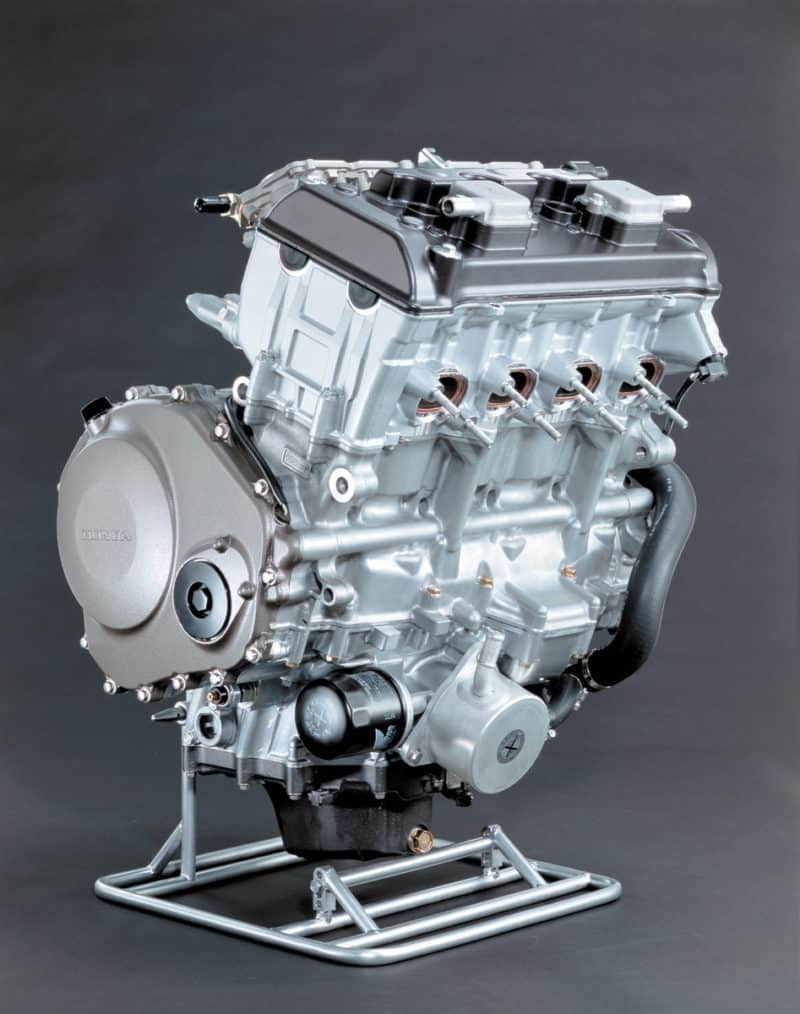
My 1000RR recently decided one of its rods belonged outside the crankcase. When I started looking at used engines I found out you can get a 2008+ 1000RR engine, one that’s good for 200 horsepower with only mild tuning, for under $2000. And my mind started running.
Smart cars, MGs, Minis, Miatas – every small car in the world would be a lot crazier with a redline of 15,000 RPM. Lucky for me another deep-pocketed gearhead has lived this dream too.
Honda S600 RR
Most of these swaps have involved rare used engines going into common cars, and this is quite the opposite – somebody threw one of the used engines from a Honda CBR1000RR into an insanely rare 1964 Honda S600 convertible. The result? Nearly 200 horsepower, or over three times stock, in a car that weighs about 1500 pounds.
We love the irony of taking one the most mass-produced used engines ever and sticking it in Honda’s first mass-marketed car ever. And if you want to undertake something like this yourself, check out this detailed guide which chronicles how that engine got where it is.
1.3-Liter Suzuki Hayabusa

The Hayabusa is the king of cheap speed – it’s the fastest cheapest stock vehicle ever made. That’s not surprising when you consider they used engines with a 1300cc displacement, the size of many small car engines. The difference is your Fiesta doesn’t rev to 13,000 RPM. With an engine size like this, the options are endless.
Used engines from Hayabusas go for about $3000, or about $1000 less than what you can get an entire bike for. Like the LQ4 from earlier your best bet is to buy the entire thing if you can, that way you have everything you need for the swap into…
A Smart Car
If you haven’t seen this video before, prepare to want a Smart for the first time in your life. One of the oldest car videos on YouTube never ceases to entertain, and the fact that this beast probably gets better MPGs than a stock Smart only adds to the absurdity.
Smarts originally used engines under 1 liter in size, and you can pick up a rolling shell for under 3k easy. That means you can have this much fun for under 8k – fabrication included. Try doing that with a 5-liter ‘Stang.
If you thought that one was nuts, one thing that’s true in the world of used engines is…
Italian Used Engines Are Expensive AF
Ferrari F136

There’s nothing wrong with pulling used engines from Ferraris, except the price. With an F136 you get a 4.5-liter 570-horsepower V8 mill that’s won International Engine of the Year eight times, and it’s wildly dependable as long as it’s maintained.
The F136 can be found in the Ferrari F430 and California, the Alfa 8C, and Maserati models dating back to 2002. This includes the often-daily-driven-by-pretentious-fools Quattroporte, lending credence to its reliability, but if you want the real deal step up and pull one out of a 458.
Gumout GT4586
If anyone deserves to have too much time and money on their hands, it’s someone who will stuff a Ferrari 458 engine into a Toyota GT86. Enter Ryan Tuerck, an American professional drifter from New Hampshire who ran the internet a few years back with his wildest creation to date, dubbed the GT4586.
This engine is so big they literally had to remove part of the windshield for it to fit. The engineering is insane all-around, and while we don’t have time to get into the details here, we have before, so go check out all the work that went into this beast.
There you have it, some of the best used engines you can buy today. But before you go buy anything, here is some engine buying advice to point you in the right direction:
8 Costly Mistakes When Buying Used Motors
If you are in the market for a used engine, you might want to read this list first. Many people are guilty of doing one of the following 8 things when looking to buy used motors. If you find yourself falling into one of these traps, chances are you are going to waste some cash rather than actually save money.
Don’t rush into anything before walking through all of our tips. With a little planning and research, you’ll able to get the right used engine for your needs. Let’s get you back on the road quickly!
Deadly Sins to Avoid When Purchasing a Used Engine
#1 – Getting One That Wasn’t Tested

Would you purchase a new car without making sure it runs? Surely not. Shopping for a used car engine (or any car parts really) is no different than buying a vehicle; in fact, it is the heart of the car after all.
The first thing you’ll want to do is get a service record about the engine or even a CarFax statement which shows you the mileage as recorded by the DMV. If that information doesn’t seem right, you probably aren’t buying what you think you are.
It happens all the time that a used motor isn’t what it was claimed to be. Customers are often told that these cheap used engines have just been rebuilt or just broken in, but the reality is that it has over 100,000 miles and is rusted up.
Keep in mind that a “rebuilt” engine is a relative term, so take it with a grain of salt. It should never be used as a way to measure the worth of an engine. Unless you have a completely detailed record describing the service done to the engine, you have no idea if it was rebuilt. For some people, this will simply mean new gaskets where to another person it means new gaskets, crank, bearing, pistons and seals. See the difference? You might be tempted to buy used engines that have been “rebuilt” but exercise caution.
The other thing to do is make sure the used motors you are looking at have been dyno tested, compression tested, oil pressure tested and has had a cylinder leak down test. The seller should have all this information for you; otherwise, you should walk away from the deal.
#2 – Purchasing Without a Warranty

Many people think that because they are purchasing a used motor, that there won’t be a warranty associated with it, but that’s not true. Many sellers offer some sort of guarantee against defects. The length of the warranty itself isn’t as big of a concern as the fact that you get one.
Even if you get a 30-day guarantee on the engine, it gives you the time you need to ensure the motor runs properly once it’s been dropped into the vehicle.
With that said, it’s also important that you find out the exclusions or conditions of the warranty. Some sellers are going to insist on providing a technician or installing the motor themselves. This is for their peace of mind that the engine doesn’t get damaged during the installation.
Make sure you replace timing components, especially on your DOHC and belt drive engines because this is required to validate most warranties. The best engines for sale come with warranties.
#3 – Failing to Make Sure it’s Complete
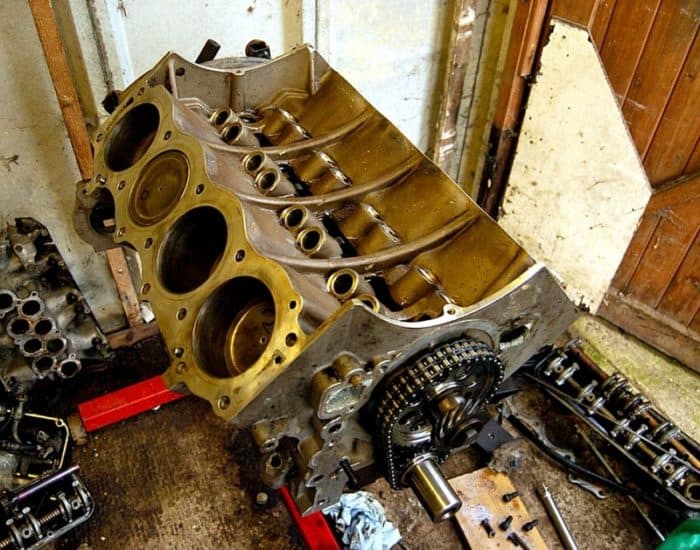
It’s important that you get proof from the seller about what is coming with the engine. Some sellers will keep parts such as the throttle units or alternators on the engine which is a plus if you need those parts. Others are going to take the parts off.
There is no standard way to handle this across the board, so it’s important to be clear up front.
To do this, simply as for a description of the engine. You can ask these questions:
– Does the used motor include intake and exhaust manifolds?
– Will it come with fuel rails?
– Can I expect to receive the wiring harness?
– How about things such as the oil pan, timing covers and valve covers?
When you are shopping for used motors, you are buying the engine only. This includes the block, internal components and heads. Any other parts that come with it are simply for convenience and not guaranteed to fit, nor will they be covered by your warranty.
That’s because manufacturers use the same block for many years, but the parts change frequently. Your best bet is to transfer the auto parts from your old motor.
#4 – Buying Without Comparing Prices

When you shop for a vehicle, do you purchase the first one you see or do you research pricing first? Buying used motors should be no different. You are preparing to put out a good chunk of change to get a motor, so you might as well get the best deal. When you’re searching for high quality used engines and transmission parts, shop around before committing to a sale.
Ask the seller for a list outlining what is in the package he is offering. Then, get at least one other offer on used motors to compare your pricing and package. You might also be able to score a lower price if you ask for a cash discount.
#5 – Purchasing from Someone that isn’t Legitimate

This seems like a no-brainer, but many people turn over money to sellers that have no reputation in the used motors business. Take the time to confirm your seller is a legitimate dealer of used motors and cars. Look, I am not suggesting that you go on some sort of witch hunt, but the Internet is a great tool for doing your homework.
With all the cases of theft and used parts being sold from cars, it’s important you do your research. You can also check with the Better Business Bureau to see if there are any outstanding complaints. Most companies aren’t going to get away with selling junk automotive parts for long without there being complaints about them online.
#6 – Not Researching Core Charge Fees

It shouldn’t come as a shocker to be hit with a core charge when you place your order. While it’s rarely talked about, it’s something you need to be prepared for. This charge is always refundable, but it might break the bank initially. You’ll find that these charges can range anywhere from $100 all the way up to over $1,000, so there is a lot of room for surprise.
To receive the core charge back, you are going to be required to provide the block and heads intact with no cracks in either.
# 7 – Neglecting to Ask for Shipping Information

You’ve been quoted a price and you are ready to pay, but did you factor in the shipping charges? Most companies fail to mention what it will cost to get it there, but that can tack on an additional $150-$400 on top of the bill. Many online store patforms have “ready to ship” engines, but they may involve a hidden fee.
Keep in mind that shipping your used motor to a residential address might cost you more than having a business address.
The company you are purchasing from might actually be purchasing from another company themselves. This could cause your engine to come from a state you weren’t prepared to pay shipping from. Not only could it cost more than you think, but you might be waiting some time for delivery.
Follow up with the company to get tracking information on your engine. If they inform you that they don’t have tracking info, be aware that they might never have shipped your engine at all.
#8 – Failing to Keep all the Paperwork

You want to keep any and all paperwork you receive with your used motor. Not only will it protect your warranty but it also helps you if there is a discrepancy after the sale.
In addition, if you ever want to sell the vehicle or motor down the road, you’ll have all the information you need to make the sale.
Quick Tips for Buying Used Motors
When you are shopping for used motors, follow these tips to help you get what you need. This checklist will help you to avoid headaches down the road.
1) Verify that you need an engine to begin with. If the mechanic tells you that you do, it’s always smart to get a second opinion.
2) Collect all the information you need to make the right purchase. This includes the VIN, production date and engine code.
3) Shop for your used motors by calling to various sellers and getting quotes.
4) Try to find an engine with under 75,000 miles. This will have less wear and tear on all the major components.
5) Verify the mileage through a CarFax report.
6) Ask the seller about the history of the motor.
7) Run all the information by your mechanic.
8) Verify warranty info.
9) Settle on a reasonable price with the seller.
10) Have the engine installed by a mechanic if you don’t feel comfortable doing the complicated job.
Warning Regarding Short Block vs. Long Block
When you are shopping used motors, you might be confused regarding the short block and long block engines.
Short Block – This includes the lower section, the crankshaft, engine block plus the connecting rods, pistons, bearings and oil pan.
Long Block – This has everything the short block does, but also includes the cylinder heads, valves, camshafts, valve springs plus possibly new head gaskets.
If you are purchasing a short block, you need to ensure that the parts you take from the old engine are going to fit and are in good condition. If your old motor was destroyed, you need to factor in the cost of the new parts for the rebuild.
Final Say
Buying used motors is a great way to keep your vehicle running when the old motor dies. Sometimes, it is simply a better choice to replace the engine in your cars and trucks than to purchase new ones. Replacement engines, transmissions and other heavy duty partsare cheaper than entirely new vehicles.
With that said, there are a lot of ways to get ripped off when shopping for used motors, just like you purchase a car. Be careful and do your homework. A little preparation now can save you boatloads of money down the line.
